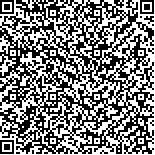沈洁,王小同,覃燕青,等.神经肌肉电刺激对慢性低氧高二氧化碳诱导骨骼肌萎缩及PTEN/Akt/FoxO1通路的影响[J].中华物理医学与康复杂志,2021,43(8):680-685
扫码阅读全文

|
| 神经肌肉电刺激对慢性低氧高二氧化碳诱导骨骼肌萎缩及PTEN/Akt/FoxO1通路的影响 |
|
| |
| DOI:10.3760/cma.j.issn.0254-1424.2021.08.002 |
| 中文关键词: 神经肌肉电刺激 大鼠 骨骼肌 萎缩 低氧高二氧化碳 |
| 英文关键词: Neuromuscular electrical stimulation Skeletal muscle Atrophy Hypoxia Hypercapnia |
| 基金项目:浙江省自然科学基金资助项目(Y2080503) |
|
| 摘要点击次数: 5592 |
| 全文下载次数: 6576 |
| 中文摘要: |
| 目的 观察慢性低氧高二氧化碳模型大鼠骨骼肌中PTEN/Akt/FoxO1信号通路变化及神经肌肉电刺激(NMES)对该通路的影响,探讨该通路在慢性低氧高二氧化碳诱发骨骼肌萎缩中的作用及NMES治疗肌萎缩的可能机制。 方法 采用随机数字表法将32只雄性SD大鼠分为对照组、模型组、假刺激组及电刺激组,每组8只大鼠。将模型组、假刺激组及电刺激组大鼠置于常压低氧高二氧化碳实验舱内,维持舱内O2浓度为 9%~11%,CO2浓度为5.5%~6.5%,对照组大鼠则置于对照舱内吸入常压空气,其他条件相同,每天造模8 h,每周造模7 d,持续4周。于第3,4周每日舱内造模结束后,将电刺激组大鼠固定后予以30 min、100 Hz电刺激双后肢治疗,假刺激组大鼠仅固定30 min,未给予电刺激干预。于造模4周后取各组大鼠腓肠肌组织,经苏木素-伊红染色观察并计算各组大鼠腓肠肌纤维横截面积,采用免疫组织化学法和免疫印迹法检测各组大鼠腓肠肌中PTEN、p-Akt、Akt及FoxO1蛋白表达。 结果 与对照组比较,模型组肌纤维横截面积明显减小(P<0.05),Akt和p-Akt蛋白表达明显减少(P<0.05),PTEN和FoxO1蛋白表达明显增多(P<0.05)。与模型组比较,电刺激组肌纤维横截面积明显增大(P<0.05),Akt和p-Akt蛋白表达明显增多(P<0.05),PTEN和FoxO1蛋白表达明显减少(P<0.05)。 结论 NMES能通过调节PTEN/Akt/FoxO1信号通路诱导骨骼肌肌纤维蛋白合成,从而改善慢性低氧高二氧化碳模型大鼠骨骼肌萎缩。 |
| 英文摘要: |
| Objective 1. To detect any change in the PTEN/Akt/FoxO1 signaling pathway in the muscles of rats with chronic hypoxia-hypercapnia treated using neuromuscular electrical stimulation (NMES), and 2. To document the role of chronic hypoxia-hypercapnia in inducing muscle atrophy. Methods Thirty-two male Sprague-Dawley rats were randomly divided into a control group, a model group, a mock stimulation group, and an NMES group, each of eight. All of the rats in the model group, the mock stimulation group and the NMES group were placed in a hypoxia-hypercapnia chamber with a 9-11% O2 and 5.5-6.5% CO2 atmosphere for 8h per day and 7d per week, lasting 4 weeks. The control group were placed in a similar chamber with normal air. In the last 2 weeks, after the 8h in the chamber, the NMES group were given 30min of electrical stimulation at 100Hz to the calf muscles of their bound lower limbs. The mock stimulation group were only bound without any electrical stimulation. After the 4-week intervention, the gastrocnemius muscles were resected and their cross-sectional areas (CSAs) were observed using hematoxylin-eosin staining. Immunohistochemistry and western blotting were employed to detect the protein expression of phosphatase and tensin (PTEN), p-Akt, Akt and FoxO1. Results Compared with the control group, a significant decrease was observed in the average CSA and in the expression of p-Akt and Akt in the model group, while a significant increase was found in the average protein expression of PTEN and FoxO1. Compared with the model group, there was a significant increase in the average CSA, as well as the average expression of p-Akt and Akt in the NMES group, but a significant decrease in the average expression of PTEN and FoxO1. Conclusion Neuromuscular electrical stimulation can relieve muscle atrophy from chronic hypoxia-hypercapnia by inducing skeletal muscle protein synthesis through regulating the PTEN/Akt/FoxO1 signaling pathway, at least in rats. |
|
查看全文
查看/发表评论 下载PDF阅读器 |
| 关闭 |
|
|
|